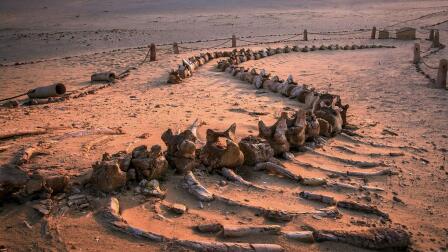Chon Noriega: Art Helps to Focus and Shift How People Think About an Issue
- Written by: Pilar Marrero, Portrait by: Ricardo Palavecino
Chon Noriega arrived in Los Angeles to become a professor at the University of California in Los Angeles (UCLA) in the summer of 1992. It was a troubling time for Los Angeles, but also a hopeful one.
“The smoke was still in the air,” he says. The L.A. Riots or Uprising had just happened. “It was quite a dramatic way to come into the city.”
The hope came from the idea of police reform and the election late that year of the first democratic president in 12 years: Bill Clinton. Artists in Los Angeles paid a lot of attention to the 500-year anniversary of the conquest of the Americas and the impact of colonization.
But that hope quickly faded when anti-immigrant sentiments began to bubble more and more onto the political arena, even before a group of citizens in Orange County started to gather signatures for what would become Proposition 187.
“Throughout the summer of 1993, you had various artists really getting national attention for drawing attention to issues of anti-immigrant kind of rhetoric, but also a continuing racial polarization that really wasn't being addressed,” says Noriega, who currently holds the position of director of UCLA Chicano Studies Research Center.
In those years, Noriega says, the culture of California society was changing from a white majority to a “much more hybrid culture, far in advance of the rest of the nation into a minority-majority culture.”
By then, a majority of students in the schools of major cities in California were children of color or immigrants “and we had not really rethought how we understood education.”
In the early nineties, Noriega says, artists were at once “following a tradition of referencing figures like the Virgen de Guadalupe or Emiliano Zapata, but also tapping into mainstream media culture through figures like Mickey Mouse.”
In the context of 187 and the social conflict it reflected of a mainstream culture rising up against the new population, immigrants and minorities — represented by Latinos — Noriega references how the beginning of the internet and social media gave many alternative artists access to a broader audience at that very moment.
“But it's also a shift from a technology that was very expensive, like video, like printing to something that was much more accessible,” he says. “People had access to things that gave them a wider reach than hadn't been possible in earlier decades.”
This period also helped redefine what was considered American Art, Noriega says, referencing Daniel Martinez, a Los Angeles based artist who is primarily known as an installation artist in public spaces.
His participation in the Whitney biennial of 1993, as one of a handful of Latino artists, touched on the racial conflict of California at the time: "His piece consists of museum tags, and they spell out: "I can't imagine ever wanting to be white.”
"He took the entire audience and turned them into a symphony so that their interactions would bring the issue to the surface. He was saying that in a satirical mode,” he remembers. “The idea was to really think about the way in which we move and interact with each other.”
Noriega points to several artists in California, of Mexican and other Latin American origins, who were already pointing to the demonization of the community even before 187, and the role of the undocumented population in the economy and society of the state.
When the proposition qualified, the reaction happened at several levels and in different artistic arenas, he says.
"There's really been no successful social or political movement that didn't have the arts as a foundation for sharpening and circulating its message…it means helping to focus, but also shift the way people think about an issue.”
Those that were pushing the issue, he says, were trying to put an image into people's heads of immigrants taking away jobs, money, public services that belong to citizens.
“What the artists began doing was confronting that directly, but also beginning to shift towards another image of workers, as contributors to the economy, people who in many ways belong here and have a voice.”
“If you do think about what the most effective pushback leading up to the election was, it was the emergence of a pretty sharp satirical voice coming from the Chicano community,” he indicates.
Twenty-six years after Prop 187, Noriega has spent half of his life teaching in the UCLA Department of Film, Television and Digital Media, and he is an adjunct curator at the Los Angeles County Museum of Art (LACMA). Shortly after Proposition 187 passed and was stopped by the courts, Noriega became the editor of Aztlán, a Journal of Chicano Studies. He has helped recover and preserve independent films and video art, curated and co-hosted a month-long festival called "Latino Images in Film" on Turner Classic Movies, curated or co-curated numerous groundbreaking art exhibitions and written several books on the history and culture of Chicano and communities of color.















